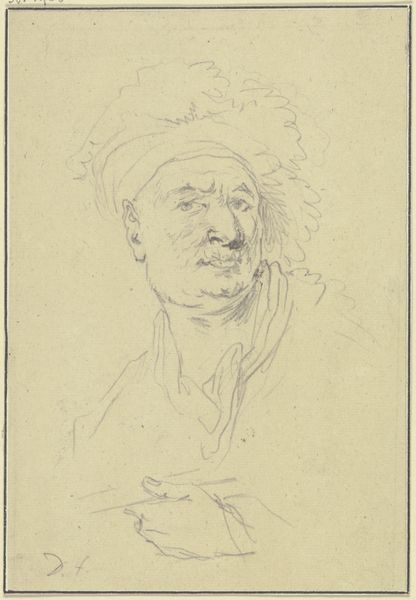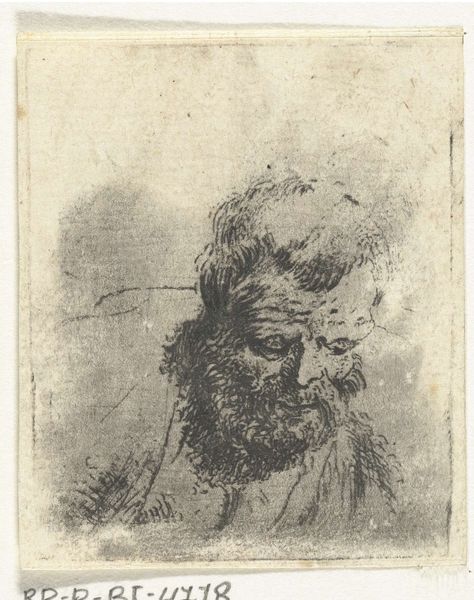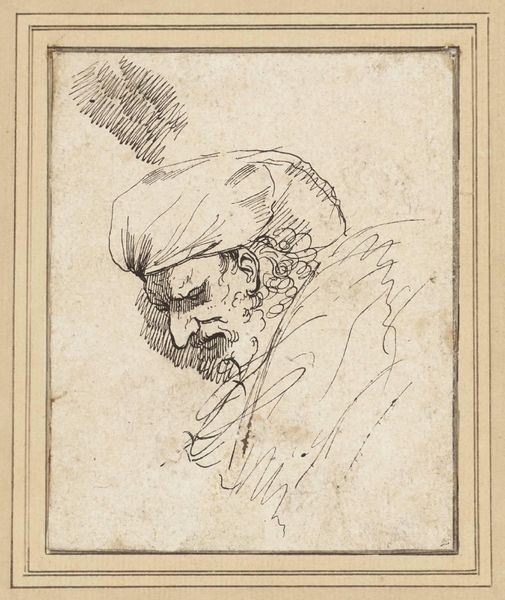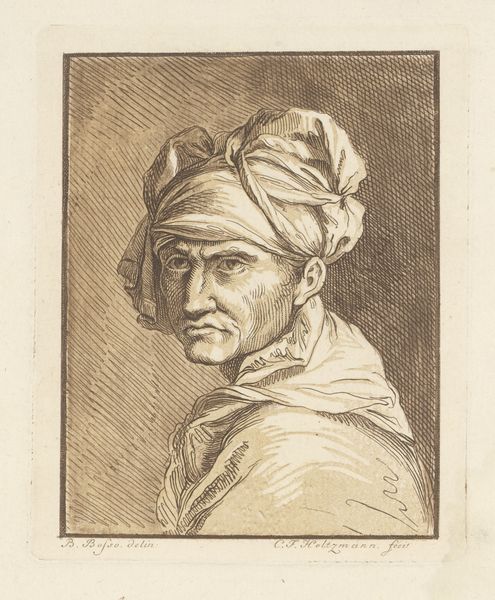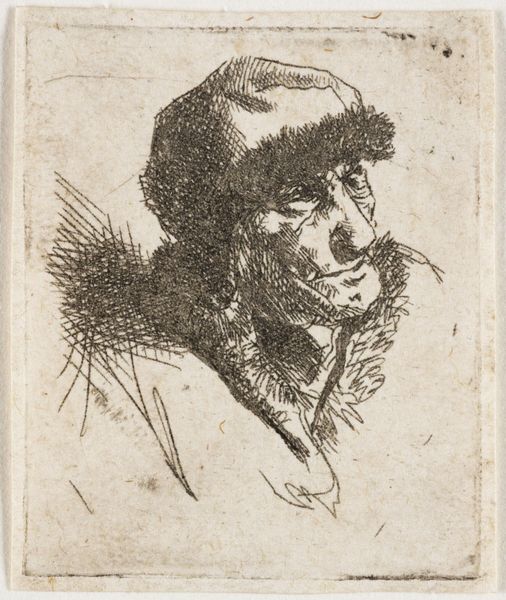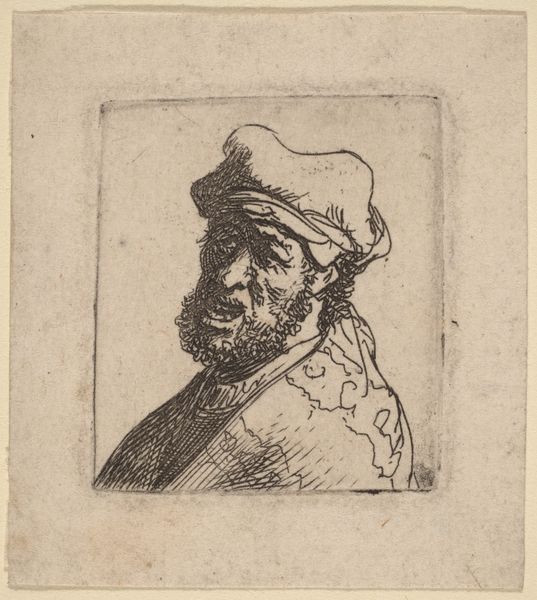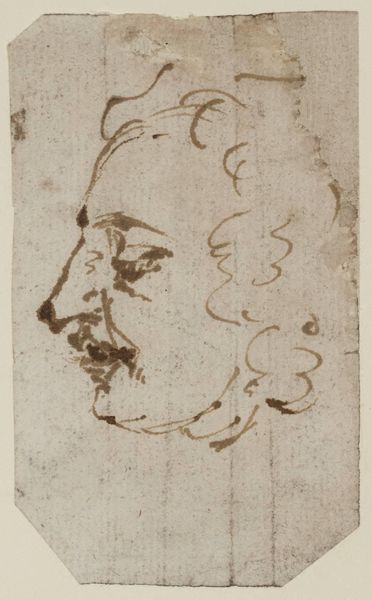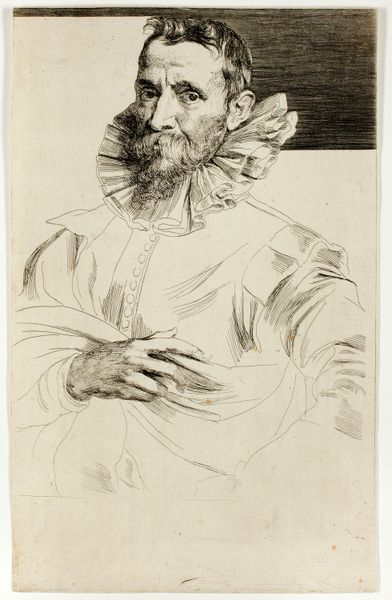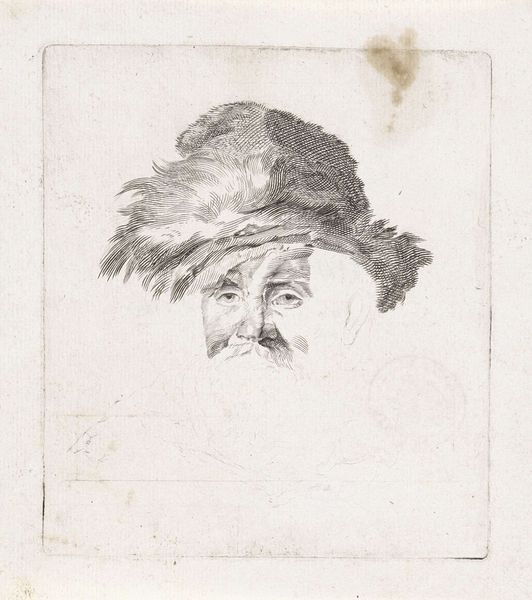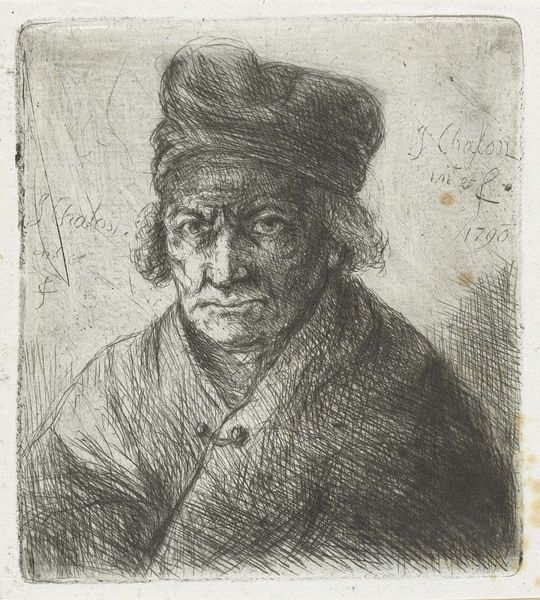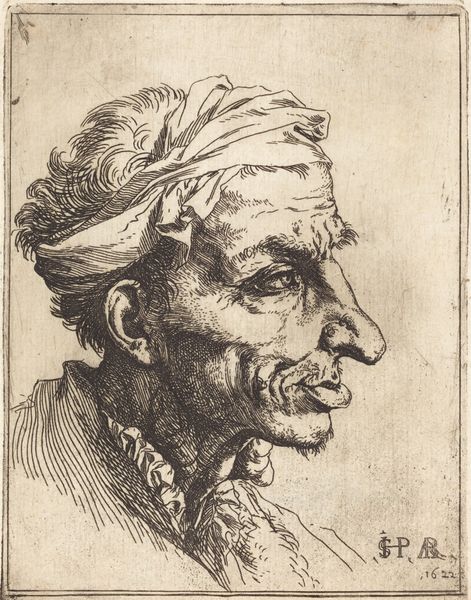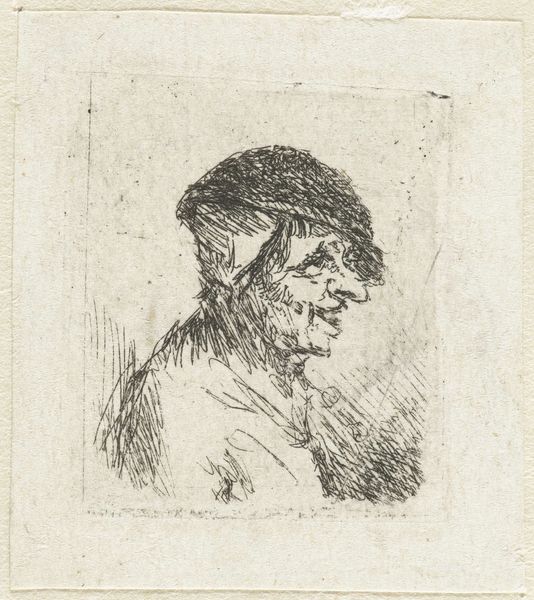
drawing, ink
#
portrait
#
drawing
#
light pencil work
#
ink drawing
#
quirky sketch
#
pen sketch
#
pencil sketch
#
personal sketchbook
#
ink
#
ink drawing experimentation
#
pen-ink sketch
#
sketchbook drawing
#
academic-art
#
sketchbook art
#
realism
Copyright: Rijks Museum: Open Domain
Curator: This is "Manshoofd met tulband," or "Head of a Man with Turban," created sometime between 1776 and 1815 by Marie Lambertine Coclers. It's a drawing, using ink. What's your initial reaction? Editor: There's a haunting fragility to it. Like a memory sketched onto parchment. The turban seems to float above his head. He has a mischievous look too. A scholar perhaps, caught in a moment of bemused contemplation? Curator: I'm drawn to how the materiality itself contributes to this feeling. Look closely; the lines aren't confident or precise. This wasn't a commission, most likely it came out of the artist’s own sketchbook work for training. The use of ink indicates it wasn't casual, yet the lightness speaks of experimentation. Editor: Absolutely, and it lends the piece this wonderfully incomplete feel. It reminds me of my own quick sketchbook drawings. What sort of training do you imagine the artist getting? Curator: Coclers belonged to a family of artists and teachers based in Liège and Rome. They were specialists in drawing, so access to materials and artistic education wasn't a privilege taken for granted. It demonstrates the complex relationship between skill, labor and value within the world of academic art. Editor: Right! A family workshop. So, the turban...do we read it as a fashionable accessory or a nod towards the exotic Other in a late 18th-century context? Curator: Both, maybe? It reflects the era's fascination with the exotic, but turbans were also fashionable at the time among certain circles. Consider the labour involved in procuring those textiles, their value as trade goods; there is wealth being communicated. Coclers, like many artists of her time, would have worked from life, using locally available models. The depiction also plays with the construction of identity, blurring the boundaries between individual portrait and typological study. Editor: I hadn't considered that angle of "typological study" but I can't help see it differently, now. Curator: It highlights the complex interplay of economics, representation and artistic skill that shaped artistic production during this period. Editor: Exactly. A small, almost offhand sketch suddenly explodes with fascinating considerations. Curator: Agreed. It is the subtle gestures of labor that really animate a piece such as this one.
Comments
No comments
Be the first to comment and join the conversation on the ultimate creative platform.
